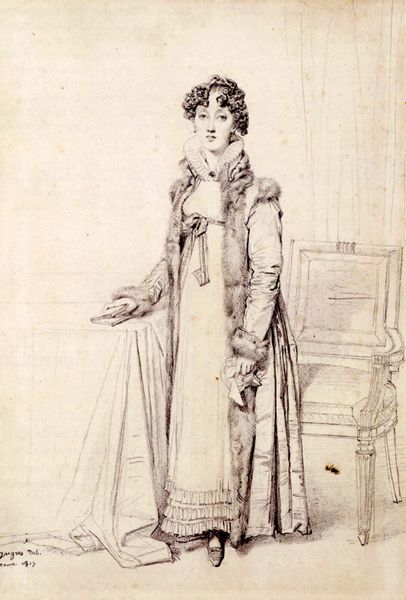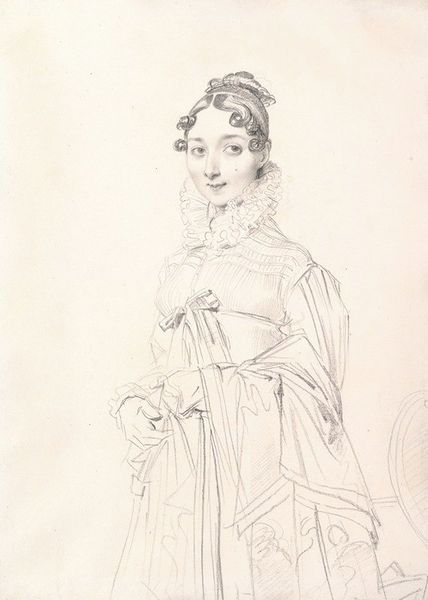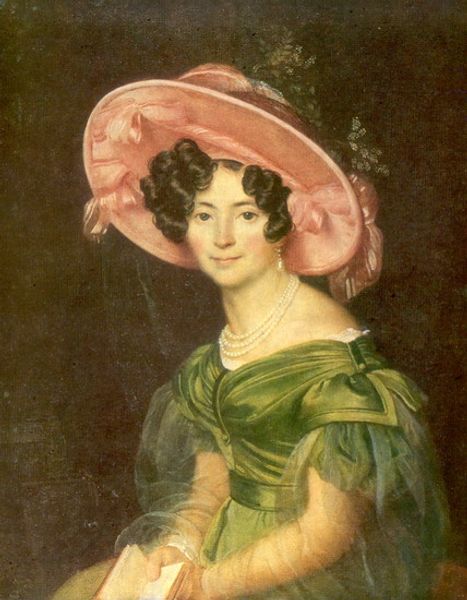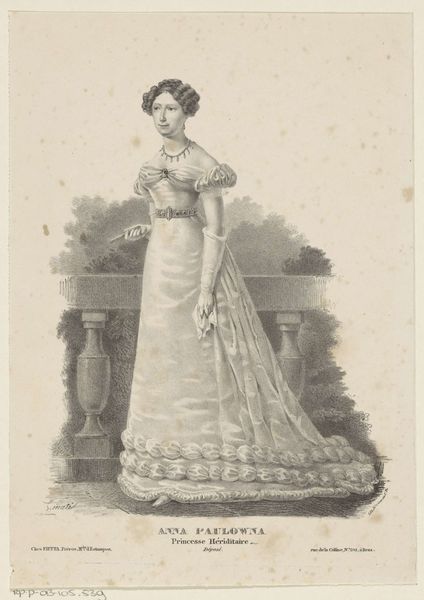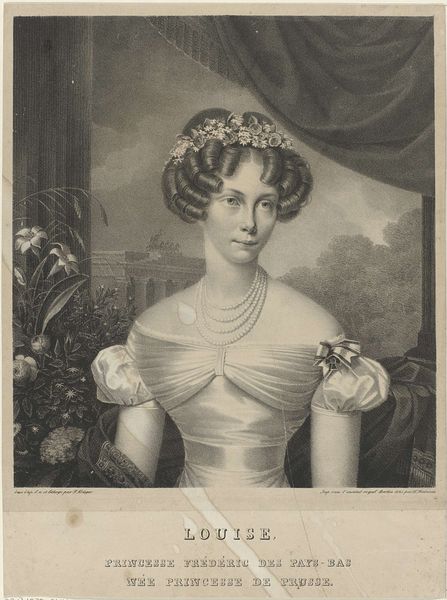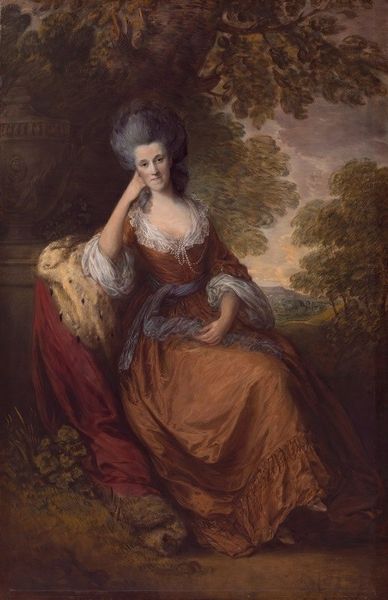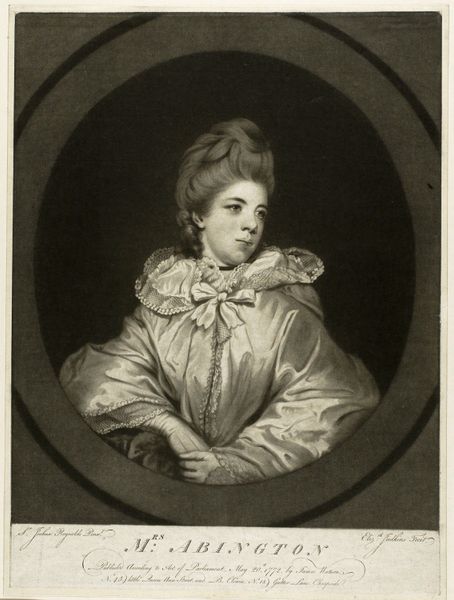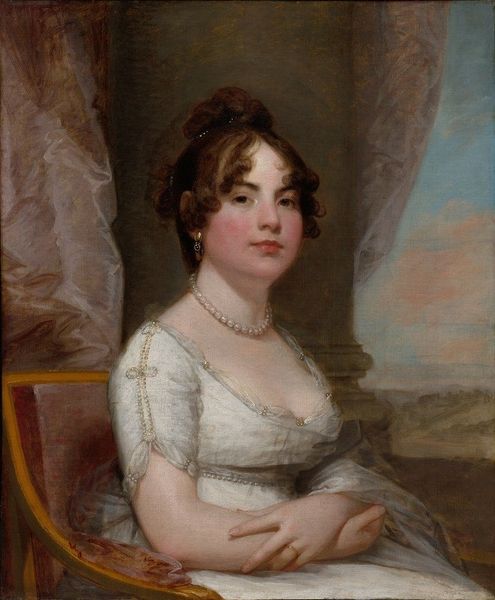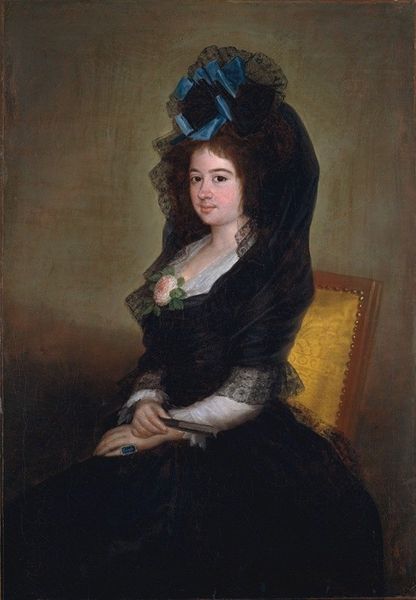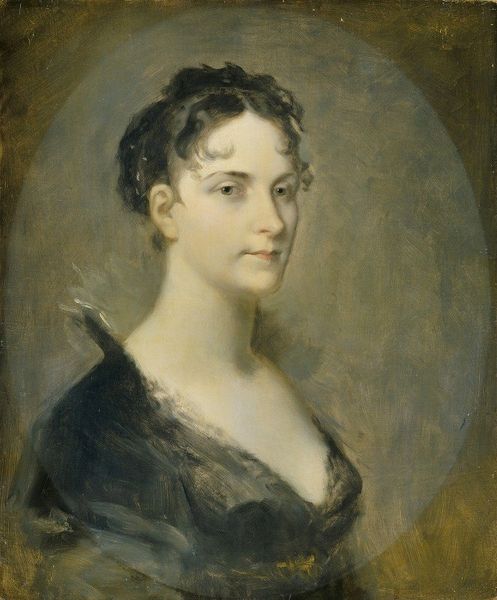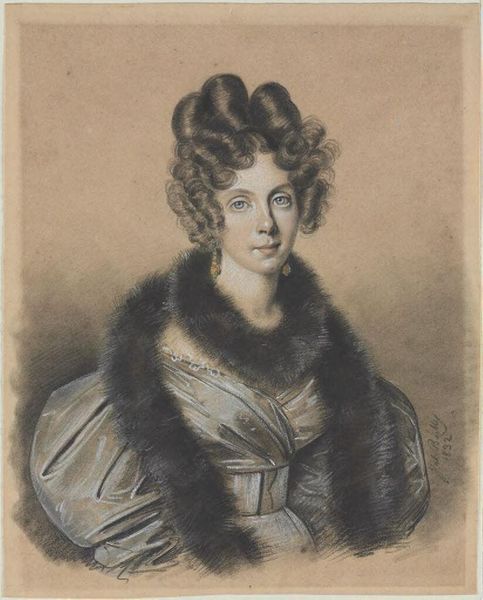
Copyright: Public domain
Curator: Just look at that gaze; there’s such a confident repose about her! Editor: It's arresting, isn’t it? This watercolor by John Absolon, painted in 1855, presents a very particular image of Victorian womanhood. It’s titled "Portrait of a Lady." Curator: Watercolors can be so evocative! I'm struck by the shawl. That specific shade of pale rose whispers of delicate beauty ideals of the era. The artist subtly plays with expectations of feminine charm but subverts them with her bold, almost challenging stare. What are we to make of her slightly parted lips, which seem to hint at a suppressed intelligence? Editor: Absolutely. Think about the time: 1855, mid-Victorian era. What this lady *wears* declares her status. The broad-brimmed hat festooned with plumes signifies something entirely different than, say, a demure bonnet. It's a pronouncement, you see, aligned with ideas of aristocratic taste making its way into bourgeois circles. It tells us about class aspirations and a self-awareness bubbling within those circles about self-fashioning and how dress, specifically, can become a tool. Curator: That knowing look connects, somehow, to those plumes you pointed out. They remind me of symbolic traditions in art where feather ornaments denote both elegance and heightened awareness – a subtle dance between the public role and inner world of women. We cannot miss how all these cultural symbols work together in that sense, it all points towards a constructed, self-aware performance of femininity. Editor: True, true! There's an undeniable emphasis on surface presentation. But considering Absolon’s other genre scenes featuring lower classes, does this perhaps gently satirize societal pretense and superficiality within aspirational social tiers? Are we reading her ‘confidence’ wrong? Is this quiet dissatisfaction at the center of her self-fashioning, hinting at something confined? Curator: I see your point, of course; I still feel that gaze has multiple levels! Is it content or restrained? Is it all artifice? The beauty is in those questions. I also keep returning to the choice of watercolor—that medium has its own implications as a carrier of social and psychological meanings. The lightness and fragility suggest she and the society around her may not be as steadfast and imposing as her dark hat initially leads us to believe. Editor: Exactly. To reflect, I wonder how women encountering this now might re-code what “performance” or “dissatisfaction” meant in 1855! Fascinating tension, I must say. Curator: Agreed. And those are the layered impressions such seemingly “simple” pieces yield over time.
Comments
No comments
Be the first to comment and join the conversation on the ultimate creative platform.

